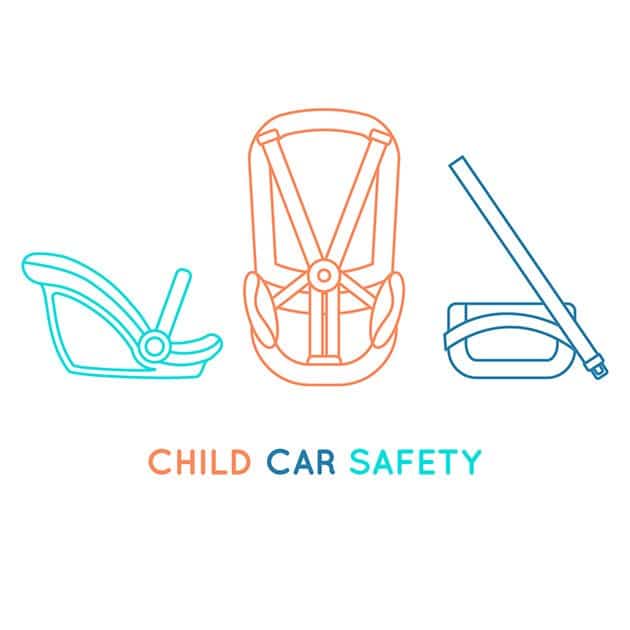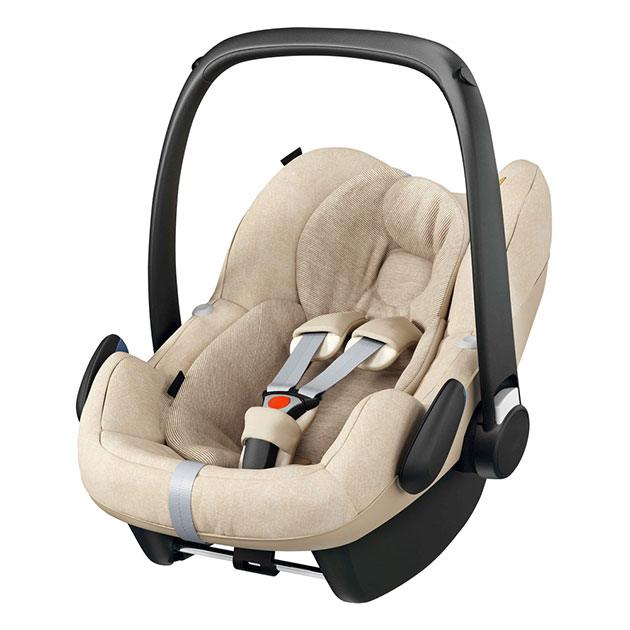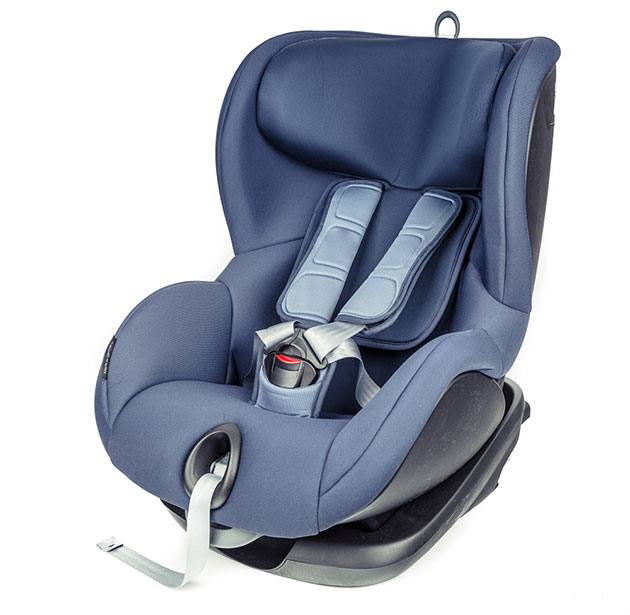Child car seats are designed to perform optimally in daily rides and car crashes, all while prioritizing child's safety. However, did you ever wonder:
What are the parts that make the car seat function so well?
Today we will be looking at the full anatomy of a car seat while explaining the functions and essential components that make a child car seat expert in safety.
More...
Table of Contents
Car Seat Anatomy
The shell

Every child's car seat includes a shell that offers the seat structure and shape.
The shell of the infant insert is made from a hard plastic, usually dense polypropylene. On the shell of the seat, parents can often find basic information about the car seat.
The label on the shell will include installation instructions and rear-facing height and weight limits. In addition, parents can find valuable information on whether the infant car seat can be installed with a carrier. Unfortunately, not every infant car seat has this option, so it's necessary to check the label on the shell and the car seat manual.
Carrier handle
The carrier handle only exists on infant car seats. The handle allows for easier portability when switching vehicles or taking your car seat to the house or stroller.
The attached handle on the car seat has several positions. The manual instructions will inform you how to properly position the carry handle once the seat is installed in the vehicle.
Car seat base
Infant car seats will always include a car seat base. On some infant seats, the base is detachable, while some seats have an integrated car seat base.
However, infant seats are not the only ones with a car seat base. Usually, you will find the base is a part of an all-in-one or convertible car seat. In this case, a convertible car seat will have an integrated base that cannot be detached.
The car seat base can be installed with LATCH or a vehicle seat belt and offers a secure car seat fit. The carrier or the car seat is then firmly attached to the car seat base via a built-in locking mechanism. The base can remain installed in the vehicle, while the portable carrier can be removed for convenience.
Car seat bases like Britax offer a SafeCell technology that absorbs all the crash forces into the base.
Harness & buckles
Shoulder belt guide

A shoulder belt guide is a part of high-back booster seats. Once the high-back booster seat is installed, the shoulder belt is guided through the shoulder belt guide for a secure fit.
In some high-back booster seats, the shoulder belt guide can be adjusted to achieve perfect wear by positioning it in a higher or lower position. The adjustable headrest on boosters will also allow for simultaneous shoulder belt guide adjustment.
Tether anchor
The top tether anchor is used for optimal stability and safety of forward-facing car seats. As a result, top tethers are rarely used with rear-facing seats.
Thanks to the top tether, forward-facing car seats are stabilized in the rear seat. Once a forward-facing car seat is secured with a tether, the seat prevents the child's head from forceful forward motions in the event of a collision.
A tether strap is made from webbing resembling a seat belt. One end of the tether strap is anchored to the car seat, while the other part attaches to the slots behind the back seat vehicle.
LATCH connectors (UAS)
The Universal Anchorage System (UAS), or LATCH, is a metal connector clip that attaches to the lower anchor connectors of the vehicle.
Almost every car seat allows you to install it using a LATCH or a vehicle seat belt. Always check the manufacturer manual before installing the car seat with either of the methods.
Infant insert & padding
Every car seat includes padding, usually made from plush materials. The seat padding provides comfort and safety by offering a protective layer between the baby's body and the car seat shell.
Infant inserts are a necessary part of rear-facing infant car seats. The infant inserts are designed to fit newborns in a snug fit. Once the baby has outgrown the newborn weight limit of the insert, you can remove the padding easily.
The head pad of the newborn insert is often detachable, so you can use it for longer if your baby needs extra head support.
Recline indicator
Infant car seats include a rear-facing recline indicator on the car seat base. Every car seat base is different, so the indicator can either be in the form of a line, bubble, or dial.
The car seat manual will inform newborns and babies about the proper recline angle. For example, newborns should ride at a 45-degree recline angle to prevent constricted airways.
Recline lever
A recline lever is also not a part of every car seat. Usually, a recline lever is found in rear-facing car seats. The lever is often located on the car seat base, but check the manufacturer manual to find this information. As the child grows, the car seat recline can be easily adjusted via a lever.
Armrests

Armrests on the child's car seat accommodate the comfort of the occupant of the seat. High-back boosters usually have armrests that begin at the seat's shell and end above the pelvic area.
Most armrests are height adjustable, so they can be positioned appropriately to comfort the child.
What to Look for in a Car Seat?
Infant car seats
When purchasing infant car seats, check for the following accessories and features:
Convertible car seats
When buying convertible car seats, make sure these features are included:
Booster seats
Booster seats are designed for older children weighing over 40 pounds. Consider the following features:
FAQs
What are the components of a car seat?
Car seat components are shell, base, car seat carrier, handle, padding, harness straps & buckles, UAS connectors, shoulder belt guide, and tether anchor.
What are child car seats made of, and why?

The hardware part of the child car seats, or the shell, is made of dense polypropylene plastic. The soft part of the seat padding is made from EPP foam, the best shock-absorbing material. The high-density sponge increases the comfort while also absorbing all of the crash energy.
The car seat's shell uses polypropylene as a heat-resisting material that offers safety and resistance. The high-heat resistance material will not be damaged under 150 degrees of external impact.
What makes car seats unsafe?
Car seats are unsafe under faulty installation. If the seat is not installed correctly, then the seat cannot function for optimal safety.
Car seats are also unsafe if used after expiration, damage, or crash. Be careful of purchasing second-hand car seats of unknown history as they are often dangerous for your child.
What kind of foam is in baby car seats?
Baby car seats' padding is made from EPP foam and EPS foam. The Expanded Polypropylene foam (EPP) and expanded Polystyrene foam (EPS) have exceptional insulation qualities while offering a lightweight design. In addition, the foam reduces vibrations while delivering stability in a car seat.
Final Words
Every child's car seat is different. However, we listed the essential parts every child's car seat features to ensure optimal safety.
We hope you learned more about the anatomy of a car seat and can now safely choose the best car seat option for your little more passing!
